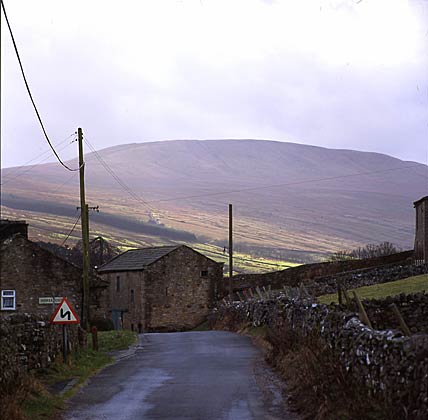

It is an evident truth that without light there is no photography. This is true in a technical sense - the photographic process needs light - but in an artistic sense as well. The word photography is derived from the Greek φωτι γραφειν for a reason: writing with light.
Most books on photography discusss 'light' with great emphasis. If the light is no good, you'd better put your camera away.

For landscape in particular light is enormously important - as each photographer will assent.
Black & white photography is about the contrast of light and shade, the way clouds are lit against the sky, the emphasis on the land's texture.
The time of day is of prime importance for colour photography, when the light is at its best and the landscape is almost glowing.
Reading some books and magazines it even seems as if the landscape photographer has regular working times: from half an hour before sunrise till two hours after and at sunset the other way round. Light makes or breaks the picture, doesn't it?
In the approaches to landscape photography article I state that there are more deciding elements for good landscape photography. Framing, composition, perspective and - of particular importance to me - subject matter all work together (or unfortunately don't) to create a successful photograph.
But I won't deny: light certainly is a very important part of the landscape. It creates mood, it stresses some parts and suppresses others. It 'makes' some pictures entirely, while other light conditions would have resulted in another so-what-picture.
Light can cause some real difficulties and as well as opportunities. It can support your interpretation of a subject or even be the real subject of a photograph.
In this article I write about a couple of points.
What kinds of light exist? What does light do for a subject? Can you create good photographs whatever the conditions? How can you use the
light to your advantage?
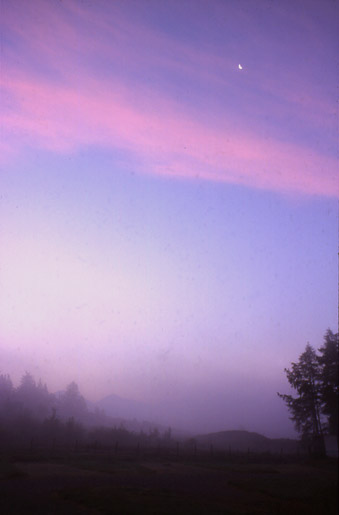
Landscapes are all different and a location can change face during the day or in the course of a year - but light is always part of it.
But well, light can vary enormously too - light in the mountains is not the same light as in a piece of woodland. When clouds drift rapidly along the sky, it can change with the moment.
The kind of light depends on a number of things: weather, time of day, time of year, geographical location. The tropical sun high up in the sky does different things to the scenery than a low midnight sun near the poles.
At night it is dark - just the moon and stars give some light. Barely enough for the human eye to
discern shapes, too little to see any colours. [ The notion that it is dark at night is by the way a bit old-fashioned. Many places of civilization and progress haven't known true darkness for a long time. ]
Some time before sunrise the world slowly turns to a purple-blue tint. Near sunrise the clouds are painted with pink and orange. The ground is still dark, but already has some colour in it. Grass starts to look green, in stead of simply dark shapes.
When the night has been clear and cold, the early morning mist arises above water and damp earth. And as pristine light touches the mist, it changes the colour, from blue to yellow.
The haze strengthens the perspective as it masks the distance, while elsewhere through gaps in the mist, distant features appear.
At sunrise (all supposing the sun does rise; if it is overcast you can only presume so because of the increasing visibility) the sun magically and enchantingly turns everything she touches into gold, whereas the shadows - that get their light indirectly from the sky - are of a deep blue. The light is abundantly warm, even if the actual temperature is freezing cold.
As the sun climbs the light rapidly gets more 'neutral': less yellowish; things have the colours we think they should have. When there are no clouds, shadows still have their blue cast, easilyl visible against the warmer sunlit areas. This is especially striking when snow covers the land. Clouds give everything a rather cool hue.
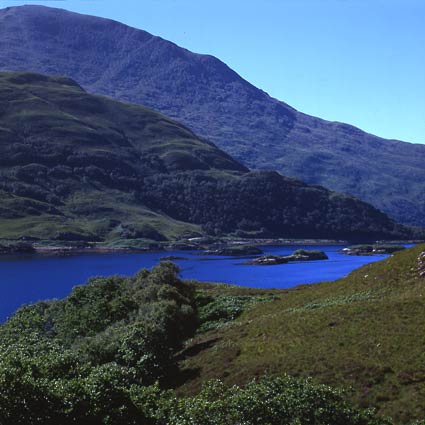
In the morning not only the colour of the light changes, but the length of shadows as well. The higher position of the sun causes them to shorten. The landscape's texture is less visible and becomes flatter. The distance often looks blue. At noon in summer time things can be still - even birds fall silent.
Towards sunset the light makes its way back. Everything turns warm again until the world is yellow. Evening light is quite often even more yellow than morning light, which tends to be more pink. Because of the day's warmth and the activities of men there is more dust in the air at night, causing warmer light and a less transparent atmosphere.
While the sun lightens the western parts of the sky, night covers the east. Whatever isn't lit by the sun looses colour. The blue of the sky turns slowly to black; just the western clouds have golden rims, in sharp contrast to their black backside. Until the moment only the sky above the horizon catches some light - and then it is night.
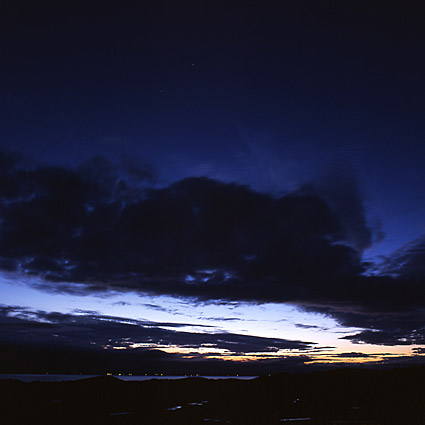
Not only the time of day changes the light's character. The seasons have their influence as well. During winter the sun shows up late and leaves early. She doesn't climb that high either. Even around noon the shadows are quite long and show the land's texture. The air can be very, very clear - particularly so if it freezes.
With a snow cover, the land looses its regular colours. Almost everything is white and whatever is without snow, like vertical features, are black. Whatever is left of colours, like the very subtle tints in the sky, are the more visible. Each hue gains strength.
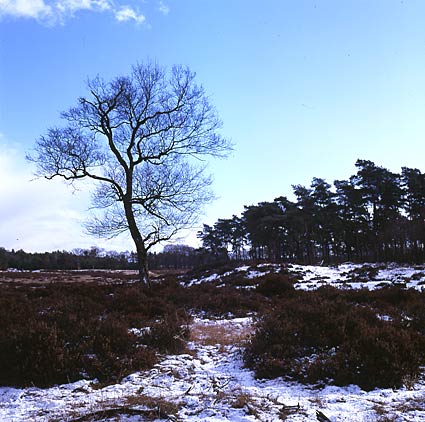
In spring it is mostly nature itself that changes colour. All shades of green are mixed with the floral beauty of flowers and trees. Colours are at their best when the sun is hidden behind clouds - full sunlight pushes the original tints away.
In summertime this effect is even stronger. Trees seem to have all the same kind of green. At noon the glaring light of the sun makes the atmosphere more deathlike than warm. Not until the evening the land breathes again as the shadows grow longer.
In additiont summer is often (at least in the Netherlands) damp. The distance turns in grey. Only when a thunderstorm arises, light does get sparkling and exciting again.
Autumn sees the days shorten again. Foliage changes colour and the leaves don't need sunlight for warmth and glow. Brackens rust to lovely shades of brown and ochre. Absolutely beautiful when the weather is fine. A storm adds lots of drama, but makes the leaves fall.
And as the sun breaks through the heavy clouds stunning sun harps can appear and glide over the earth.
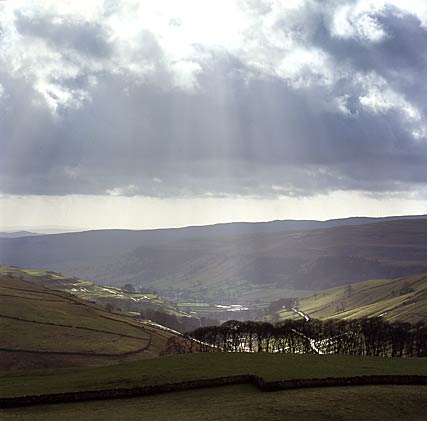
Evidently it is not time of day or year alone that influences light - weather is of prime importance as well. It is not so much about the amount of light, but about colour and in particular direction.
As soon as the sun shines (read carefully now; a brilliant thought is coming!) shadows appear. The light in this case has a distinctive direction, causing strong contrasts. Woodland or built-up areas have very deep shadows while brighter areas almost hurt the eye. When the sun is high, the light is harsh and the subject's own colours are suppressed by the sheer amount of light and the reflections it causes.
When the sun shines it really matters in what direction you view. If you look with the sun at your back, everything is flatly lit. We don't see many shadows, as they are behind the things we look at.
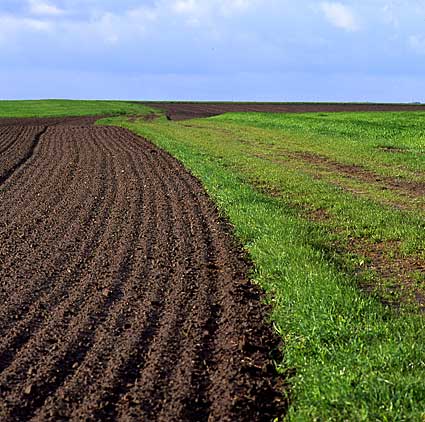
If you turn your eyes to the left or the right, the alternation between sunlit and shady areas show the land's relief and rhythm. The texture of fields and orchards can be seen very well.
As soon as we look right towards the sun colours turn into very deep shades. Sunlight is seen through leaves and shrubs, turning the leaves and grasses to a deep kind of green. Most objects show their shady side, but the edges are highlighted by the sun.
When the weather is overcast the more subtle colours become clear. Because there are no shadows, the landscape shows less texture and rhythm than under sunlight. Other forms and features of a scene can be more evident though, like dots of flowers colours here and there.
The most exciting light appears where the clouds break open and the sun reappears, particularly after a heavy shower. Suddenly some parts of the land are highlighted - like in the photo on top of this article. The mood is one of mystery - at each moment the light changes again.
And now back to photography! What can one do with all these kinds and amounts of light?
The amounts won't be a problem, as long as you know how to measure and expose. At night or in the case of very strong contrasts one has to work with reciprocity tables or ND-grads - not the subject of this article.
What I will mention here is the possibility of over or underexposure for artistic reasons. Overexposure stresses the mood of a summer's day while underexposure can evoke an eerie mood.
Another consideration is 'what to do with all the various kinds of light'. As I wrote above, there seems to be some sort of taboo on making photographs at noon or overcast conditions. Light is bad under those conditions - put away your camera.

This is grossly exaggerated. First of all we often don't have the choice to return at a different time, when the light might be better. I am not a full-time traveller and as much as I would like to live in Scotland - two or three weeks in summer is the most I can hope for.
Secondly place I don't believe in the notion of 'bad light'. Morning and evening light is softer and warmer than at noon indeed. But even at noon good photography is possible.
One can try to catch the particular mood of noon. The photo at the right for example shows the typical blue of a sunlit afternoon. It is not perhaps a romantic picture for a travel brochure, but for me it sums up what the mood of the moment was.
This harsh light can be used well with strong coloured subjects too, like sunflowers or this letterbox. The picture has the feeling of a poster, attracting attention by its bold colours.
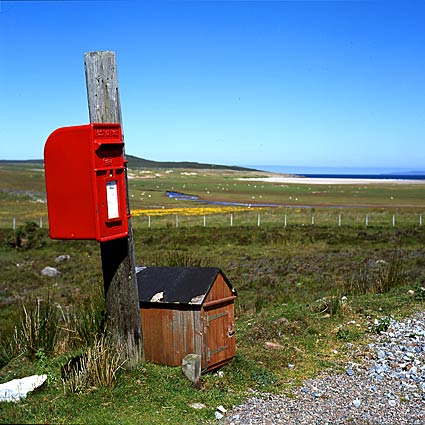
Common photo book wisdom says diffuse light of an overcast day should be avoided. The sky is colourless, the landscape not exciting.
But these conditions are a challenge to work harder for a well composed successful image. And the subject's own colours often do better without the sunlight or dawn's
spectacularly coloured skies.
Therefore this diffuse light is very good for close-up photography. Woodland shots do better as well, because contrast - always high beneath the trees - stays within a level that can be handled by film.
So there is no such thing as 'bad light' - but maybe easy and less easy conditions. By choosing your subjects carefully or taking another approach countless photographic possibilities remain.
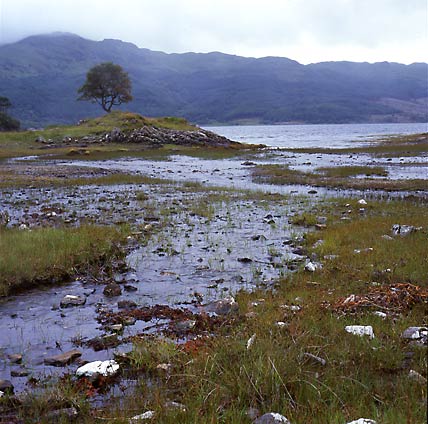
Always? In all honesty: no. Cloudless weather on a summer's day can drive me to desperation. Stunning scenery - but no means to catch it beautifully. And if I try, like below on the the left, the results are not much to write home about. The sky is hazy, everything is turned blue, without featuring it as a theme of its own. The moment I made this picture, I knew that I should wait for a couple of hours.
So personally speaking there is light that makes good landscape photography almost impossible.
But the amount of light that afternoon gave me a chance to make a picture of the tidal pool with jelly fish soup. The colours remained true, as I stood just a couple of feet from the subject. So no blue cast here.
Photographers make images of landscapes. People do this, because some elements caught the eye, or to show what moves them in a particular piece of scenery. [ confer approaches to the landscape ].
Light is a very important ingredient here. Conscious use of the available light - or waiting for the right light to come! - supports the interpretation you give to a landscape to a large extent.
Light creates all different kinds of moods and atmosphere. Light can be warm or cold, soft or harsh, tranquil or dynamic.
When you want to show a landscape full of peace, drifting clouds are best avoided. If you want to catch the idea of wind, water and earth the very same clouds are a very strong element for your case.
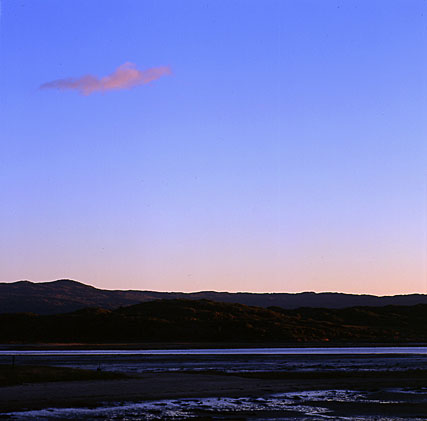
The light at a certain moment can even be the main reason to make a photograph. For example: to me this picture here tells the tale of a peaceful evening. I can hear the gentle sound of the sea and feel the fresh winds coming down from the hills. The light is the main subject here.
A romantic rural scene, with some trees, lovely meadows and a distant farmhouse will do well in calm evening light. A gothic castle is best captured in a thunderstorm or torrential rain.
The opposite though can also deliver good pictures as well. A rainy day at the beach for example, or a sun flooded Scotland! Because expectations are broken the photo is more exciting and interesting.
In short, dare to work whatever the conditions are. Use the many possibilities of moods and colours nature has on offer. Don't take common wisdom for granted that only special light allows for good photography. Any light is good light - well most of the time. There are days... But even then the landscape tells its tales. Just listen carefully
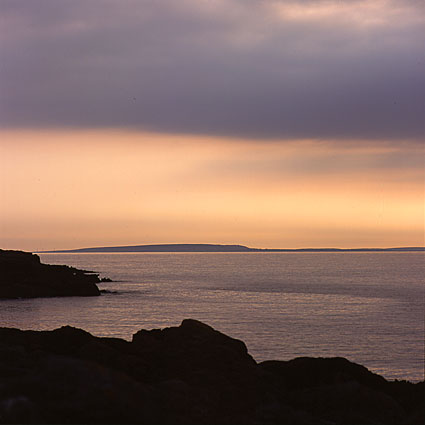
This article is written by Wim van Velzen, © 2003.
Comments on the article and photographs are welcome!The landscape photographs shown here and lots more are put in several portfolios!
It is also possible to order landscape prints or to use them editorially or commercially.